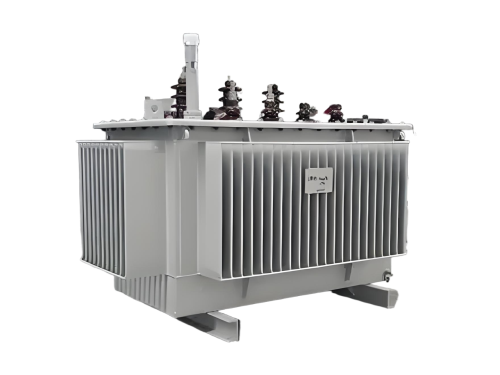

Inquiry

Project Review

Machining

Quality Control

Pass/Fail

Delivery
The key technologies of oil-immersed transformers encompass various aspects, including insulation and temperature rise control, cooling system optimization, temperature monitoring and protection, oil protection and maintenance, as well as manufacturing process and material innovation. Below is a detailed introduction to these key technologies:

1. Insulation and Temperature Rise Control Technology
Oil-immersed transformers employ insulation materials with different heat resistance grades (such as Grade A, E, B, etc.), with their temperature rise limits strictly corresponding to the insulation grades. For example, the winding temperature rise limit for Grade A insulation materials is 65K (with a maximum allowable temperature of 105°C at an ambient temperature of 40°C), and the upper oil temperature must not exceed 95°C. This technology requires strict control of temperature rise during transformer design and operation to prevent accelerated aging of insulation materials and shortened transformer lifespan.
Temperature Rise Control Methods: Measures such as optimizing transformer structure, improving heat dissipation systems, and adopting low-loss materials are employed to reduce the temperature rise during transformer operation.
Insulation Material Selection: Appropriate insulation materials are selected based on the transformer's operating environment and load requirements to ensure stable insulation performance during long-term operation.
2. Cooling System Optimization Technology
The cooling system is crucial for the normal operation of oil-immersed transformers. Depending on the transformer's capacity and cooling method, cooling systems can be classified into various types, including natural cooling (ONAN), forced oil circulation air cooling (OFAF), and forced oil circulation water cooling (OFWF).
Natural Cooling: Relies on natural oil convection and radiator heat dissipation, suitable for small-capacity transformers.
Forced Oil Circulation Air Cooling: Accelerates oil circulation through oil pumps and enhances heat dissipation with fans, suitable for medium to large-capacity transformers.
Forced Oil Circulation Water Cooling: Uses water to cool the oil, suitable for ultra-high voltage or large-capacity transformers.
Intelligent Temperature Control Technology: Automatically starts or stops cooling fans or oil pumps based on oil temperature to optimize energy efficiency and reduce operating costs.
3. Temperature Monitoring and Protection Technology
Accurate temperature monitoring and effective protection measures are essential for ensuring the safe operation of oil-immersed transformers.
Temperature Monitoring Methods: These include top oil temperature gauges, winding thermometers, and online monitoring systems. Top oil temperature gauges directly measure the oil temperature at the top of the tank, reflecting the overall cooling effect; winding thermometers measure winding temperature through thermal simulation or fiber optic sensors, offering higher precision but at a higher cost; online monitoring systems integrate temperature, load, oil level, and other data to enable remote monitoring and early warning.
Over-temperature Protection: Alarm and trip thresholds are set. When the top oil temperature reaches 85-90°C, an alarm is triggered to prompt maintenance personnel to inspect the transformer; when the top oil temperature reaches 95-105°C or the winding temperature exceeds the limit, the power supply is automatically cut off to prevent equipment damage.
4. Oil Protection and Maintenance Technology
Transformer oil serves not only as a cooling medium but also as an insulation agent. Therefore, oil protection and maintenance are of utmost importance.
Oil Conservator: Transformers should be equipped with an oil conservator (except for corrugated tanks, transformers with elastic plate radiators, or sealed transformers with gas inside the tank), which should have a structure facilitating internal cleaning and an oil level display function.
Dehydrating Breather: An oil-sealed dehydrating breather is generally installed on the oil conservator to absorb moisture from the air and prevent oil deterioration.
Oil Sample Analysis: Regular oil sampling and analysis are conducted to detect indicators such as moisture and gas content in the oil, assess oil quality, and take timely maintenance measures.
5. Manufacturing Process and Material Innovation Technology
With the development of the power industry, the manufacturing processes and materials for oil-immersed transformers are constantly innovating.
Manufacturing Process: Advanced manufacturing processes such as vacuum impregnation and automatic winding are adopted to improve transformer manufacturing quality and efficiency.
Material Innovation: Research and development of new insulation materials and cooling media are underway to enhance transformer heat resistance grades, heat dissipation performance, and environmental friendliness. For example, nano-modified transformer oil can reduce the top oil temperature by 8-10K, and phase change material cooling technology can reduce winding temperature rise by over 10K.

The main products include oil immersed transformers, dry-type transformers, power transformers, amorphous alloy transformers, mining transformers, box type substations, high and low voltage switchgear and supporting products
Add: South Head of Mount Huangshan Road, Liaocheng Development Zone, Shandong, China
Email:sdbyqcj@163.com
Tel: +86 13706354419